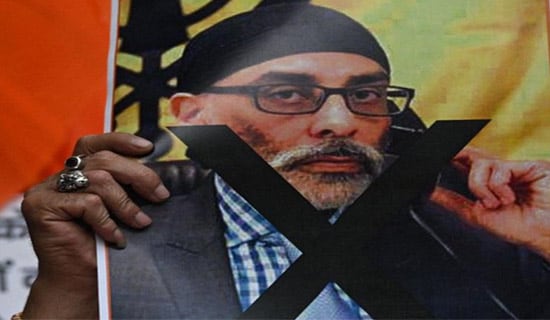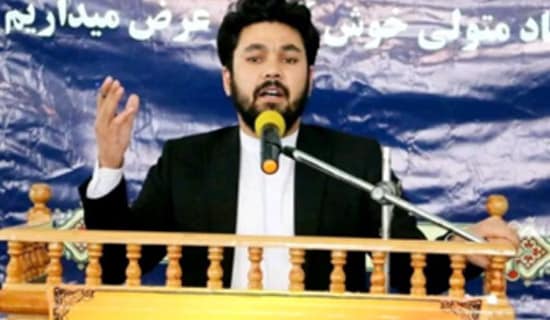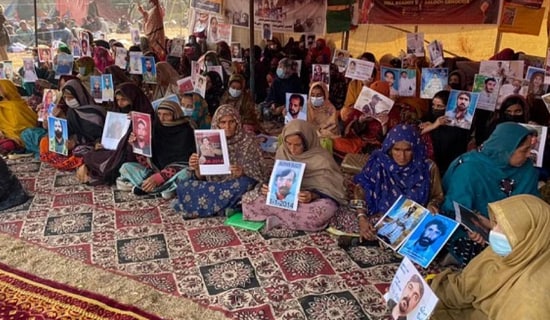Introduction
According to the IAEA report released January 16, 2016, Iran has implemented its commitments under the JCPOA. This means that Iran has not refrained from meeting its obligations, despite Iranian Supreme Leader Ali Khamenei's nine preconditions, which he set out in an October 21, 2015 letter to Iranian President Hassan Rohani.[1] Obviously, Khamenei, the head of Iran's ideological camp which had opposed the JCPOA, has capitulated to the pragmatic camp which demanded that the JCPOA be honored and that Iran fulfill its commitments under it, with no further conditions.
How Can Khamenei's Capitulation Be Explained?
One explanation for Khamenei's capitulation over Iran's implementation of the JCPOA is that the ideological camp has, in recent months, found itself fighting on several fronts simultaneously:
1. The deteriorating Iranian economy and the need for sanctions relief.
2. The increasing conflict with the pragmatic camp in advance of the upcoming elections for the Majlis and Assembly of Experts;[2] as noted, the pragmatic camp has insisted that Iran implement the JCPOA.
3. Difficulties in Iran's multi-front war against the Sunni camp of Saudi Arabia, Turkey, Pakistan, the Gulf states, Egypt, and Jordan.
4. Additionally, Iran's failure to carry out its implementation commitments could have placed Khamenei in direct conflict with the West.
In light of all this, Khamenei has chosen not to confront both the West and the Sunni world at the same time, focusing on Iran's domestic front. By doing so, Khamenei has recruited the entire Western world, particularly the U.S., to the side of Shi'ite Iran in its struggle against the Sunni threat against it.
Khamenei's main struggle at this stage is domestic: there is a need to strengthen the ideological camp, and through it, the regime of the Islamic Republic of Iran, so that in future it can operate more freely on the nuclear front as well.[3]
Another explanation for this capitulation is that Khamenei's position was from the outset for purposes of bargaining, with the aim of maximizing Iran's gains under the JCPOA. Ultimately, the West enabled Iran to carry out its commitments in a way that benefited Iran more than the original JCPOA did, as follows:
What Iran Has Achieved With The JCPOA
With the JCPOA, Iran has achieved the following:
SUPPORT OUR WORK

1. International recognition as a nuclear state, with the right to enrich uranium and to trade in nuclear products, as it maintains its membership in the Non-Proliferation Treaty (NPT).[4] This is in spite of its years of striving for nuclear weapons, as was recently reaffirmed by the IAEA's December 2, 2015 report on the Iranian nuclear project's Possible Military Dimensions (PMD).[5]
2. Legalization and upgrade of its nuclear program, and at the same time the lifting of most of the sanctions put in place because of its pursuit of nuclear weapons. In return, it is subject to a series of restrictions extending its breakout time, that is, the time it needs to produce enough highly enriched uranium to make one nuclear weapon, from two months to one year.[6]
3. Upgrade to a regional superpower with nuclear capabilities, and strengthening of the resistance axis, which it leads. This comes at the height of a regional Sunni-Shi'ite struggle against the U.S.'s traditional allies - Saudi Arabia, the Gulf states, Turkey, Jordan, and Egypt.
4. Even the nuclear restrictions imposed on Iran involve substantial benefits that upgrade and industrialize its nuclear program. Some of these restrictions, which have been described by the U.S. administration as substantially and irrevocably extending breakout time to produce a nuclear bomb, do not actually do so reliably:
* Enriched uranium - In return for its removal of 11 tons of uranium enriched at a level of 5% to Russia, Iran received 197 tons of yellowcake (uranium ore). However, in a February 11, 2016 hearing of the House Foreign Affairs Committee, U.S. Lead Coordinator for Iran Nuclear Implementation Stephen Mull acknowledged that the U.S. had lost track of Iranian nuclear shipments. He said that tons of Iranian low-enriched uranium sent to Russia had been taken to an unidentified location, and acknowledged that Washington did not verify the Iranian shipment, which was part of the JCPOA. Russia, he said, not the IAEA, was responsible for the Iranian uranium; the IAEA had attended the loading of the Iranian uranium onto the Russian ship. [7]
* Enrichment capability - Iran maintains its uranium enrichment capabilities at its "declared facilities," as stated in the January 16, 2016 IAEA report, which does not refer at all to nuclear and/or undeclared sites regarding which Iran announced that it would not permit IAEA inspections.
* Number of centrifuges - Iran's ostensible reduction in the number of its centrifuges from 20,000 to 6,000 is false, because of the original 20,000, only some 10,000 were active, and most of these were first generation. Therefore, the actual number of first-generation active centrifuges that were shut down was only 3,000-4,000.[8]
* Research and development - Iran is permitted to continue research and development of advanced centrifuges.[9] It should be noted that the JCPOA even allows Iran to create a nuclear detonation installation for research purposes only.
* Heavy water from the Arak reactor - The heavy water from Iran's Arak plutonium reactor was removed to Oman, a tiny satellite state bordering Iran that is incapable of standing up to any potential pressure from its neighbor. Thus, removing the heavy water to Oman was practically a joke.
* Removal of the reactor core at Arak - The reactor core was indeed removed from Arak. However, as Atomic Energy Organization of Iran (AEOI) director Ali Akbar Salehi said, in any case Iran had no capability to produce plutonium.[10]
* Y. Carmon is President of MEMRI; A. Savyon is Director of the MEMRI Iran Media Project.
Endnotes:
[1] See MEMRI Inquiry & Analysis No. 1196, Iranian Supreme Leader Khamenei's Letter Of Guidelines To President Rohani On JCPOA Sets Nine Conditions Nullifying Original Agreement Announced July 14, 2015, October 22, 2015.
[2] A January 19, 2106 poll by the official Iranian news agency IRNA showed that over 79% of Tehran residents are satisfied with the implementation of the JCPOA and the lifting of sanctions, while 75% believe that Iran's implementation of it will improve its situation. Another 18.2% believe that this implementation will not change Iran's situation, while 6.4% believe that it will change it for the worse.
[3] The scope of the domestic threat to the regime that Khamenei faces was accurately described by Alireza Zakani, head of the Majlis Special Commission for Reviewing the JCPOA, who warned on January 29, 2016 that the supporters of the Rohani government, whether or not they are successful in the upcoming elections, will find a way to paralyze Iran's Islamic Revolution, the resistance axis, and the Muslim movement worldwide. Zakani also warned, particularly, about Hashemi Rafsanjani, calling his supporters "the pro-Western stream" in Iran. He stated that unfortunately, we are dealing with conditions that are unlike those of previous election campaigns, and if we are not careful, this can "lead to the destruction of the regime and the Islamic Revolution." If we wish to succeed in the elections, we must warn society and unite the ranks of the revolutionary front to create a Majlis with conservative values and forces, he added. Fars (Iran), January 29, 2016.
[4] On January 21, 2016, Ali Akbar Velayati, senior advisor to Khamenei, told Iran's Fars News Agency about Iran's nuclear and foreign relations achievements under the JCPOA, and about the resulting improvements in its geopolitical status. Atomic Energy Organization of Iran (AEOI) head Ali Akbar Salehi, said at a conference to examine the results of the JCPOA at the Strategic Council on Foreign Relations on January 27: "We have not permanently relinquished any nuclear right, but rather merely agreed to certain restrictions for a certain period." Tabnaq (Iran), January 27, 2016.
[5] See MEMRI Inquiry & Analysis No. 1207, The Prospects For JCPOA Implementation Following The Release Of IAEA Sec-Gen Amano's Report On The PMD Of Iran's Nuclear Program, December 8, 2015.
[6] According to statements by President Obama and Secretary of State Kerry, prior to the JCPOA, Iran needed only two months to produce enough highly enriched uranium to make one nuclear weapon. See for example Reuters, April 8, 2014; NPR.org, August 11. 2015.
[7] According to AEOI head Salehi; Tasnim (Iran), December 29, 2015. Salehi also said, on January 27, 2016, at the conference to examine the results of the JCPOA at Iran's Strategic Council on Foreign Relations, that "Iran has amassed 550 tons of raw uranium from the start of the Revolution to date. Following the JCPOA, 220 tons of raw uranium was added to this quantity. This accelerates our potential." Tabnaq (Iran), January 27, 2016. Menews.online.com, February 16, 2016; Chrissmith.house.gov/uploadedfiles/transcript_from_iran_nuclear_deal_hearing.pdf, February 11, 2016.
[8] See confirmation of this by Salehi at the January 27, 2016 conference: "There is a claim that reducing the number of centrifuges from 20,000 to 6,000 was a major restriction. We had 20,000 centrifuges, [but] only 10,000 were enriching uranium, and now we have reduced the number to 6,000. This means that our annual enrichment has gone down from 2.2 kilograms to 1.5 kilograms." Tabnaq (Iran), January 27, 2016.
[9] Salehi said that "for the Bushehr reactor we would have needed some 30,000 kilograms of uranium, which would have taken 15 years to produce. This was not commercially feasible. Therefore, we are advancing towards centrifuges with industrial characteristics. With reverse engineering, we have managed to design eight types of centrifuges, the latest of which is the IR8. The [first generation] IR1 has only one SWU [Separation Work Unit], while the IR8 has 24. Even without the JCPOA, we could not have achieved 190 SWU [the production level that Khamenei demanded] with the old centrifuges, since Natanz only has room for 50,000 of the old units. However, with the new centrifuges, we can reach one million SWU at Natanz. In any case, it will take us seven to eight years before we can commercially manufacture the new centrifuges." Tabnaq (Iran), January 27, 2016.
[10] Salehi said: "We agreed not to produce plutonium from spent fuel for 15 years. This seems to be a restriction, but we currently do not even have fuel from which we would want to produce plutonium, [since] we are sending the spent fuel from the Bushehr reactor to Russia... Even had we not accepted this restriction, we would have been unable to actually produce plutonium... We have no plutonium from which we would want to produce metal." Tabnaq (Iran), January 27, 2016.




